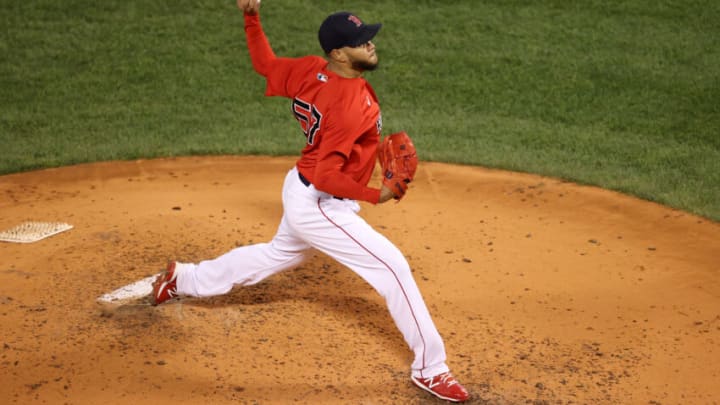Red Sox and Eduardo Rodríguez face off on possible qualifying offer
Thanks to the CBA (Collective Bargaining Agreement), MLB has an interesting item called a Qualifying Offer (QO) that may impact the Red Sox this offseason. This year the QO has declined slightly to $18.4 MM from $18.9 MM in 2020.
The QO can be delivered to a team’s free agents who have ten days to accept or reject the offer. The two most important notes are a player must not have received a previous offer and have been with the team the entire previous season. Anthony Rizzo cannot receive a QO from the Yankees since he was traded during the season. Details of a QO can be examined here.
Regarding the Red Sox, there is only one pending free agent that could receive a QO. In MLB Trade Rumors, that is in the likely category for lefty Eduardo Rodríguez.
Players that are in the statistical area that brings forward a QO generally pass and test the market. One such exception was right-hander Marcus Stroman who accepted the Mets offer after the 2020 season. His decision proved favorable for both parties and Stroman (10-13, 3.02/3.49) is now open to bids.
What stands out statistically for E-Rod is 31 starts. Despite a myriad of health issues in 2020, Rodríguez managed to take the hill with consistency in 2021. What is inconsistent is those very starts. The 13-8 record had a 27.4 K%, 7.0 BB%, 4.74 ERA, and 3.55 xERA. That ERA, however, is somewhat mitigated by a 3.32 FIP—Rodríguez’s 3.8 fWAR or just below Robbie Ray’s 3.9 fWAR.
Despite a fastball that has slowly declined since 2015 (94 to 92.6 MPH), Rodríguez still has an 86.5 exit velocity on batted balls – among the lowest in baseball. E-Rod has mastered pitching as his speed has diminished. Rodríguez has migrated to using a cutter more often (17.4%) and less reliance on a fastball (51.6%).
If Rodríguez rejects the offer, a window still exists for a contract with the Red Sox or any other team. But if Rodríguez accepts, the Red Sox get tagged with an $18.4 MM contract. A team signing E-Rod then faces a loss of a draft selection which will be compensation for Boston. A friendly game of poker for both parties.
The QO can be viewed two ways by a player and his representatives. The negative is it lessens market appeal with a loss of a draft pick. On another angle, it does show how a team values a player. With Rodríguez, a possible borderline QO candidate, it shows that the Red Sox places a high value on his services, albeit for only one year.
Since this is an opinion piece and I control this end of the keyboard, I would tender the offer and use it as a building block for a longer-term deal. A risk, as is all pitching contracts, but Rodríguez appears to be healthy, has no arm issues, and will be 29-years-old next season.
From Rodríguez’s position, I would reject the offer and test the market. Baseball’s premium on pitching, such as Garrett Richards at $10 MM, is a clear example of an inflated market. The money will be there for Rodríguez either in Boston or elsewhere.
